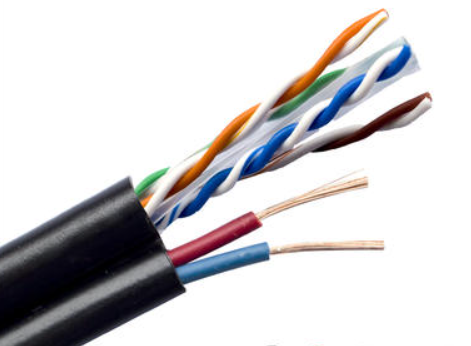
What is the Difference Between Cat5 and Cat6 Cable
Ethernet cables play a crucial role in networking, providing the backbone for reliable and efficient data transmission. Among the various types of Ethernet cables available, Cat5 and Cat6 cables are widely used. In this article, we will explore the key differences between Cat5 and Cat6 cables, helping you make informed decisions for your networking needs.
Overview of Cat5 Ethernet Cable
Cat5 cables, short for Category 5, were introduced in the late 1990s and became the standard for Ethernet networks. They were designed to handle speeds up to 100 Mbps (Megabits per second) and have been widely deployed in residential and small office environments.
●Technical Specifications
Cable Category and Standard: Cat5 cables comply with the Category 5 standard defined by the Telecommunications Industry Association (TIA).
Maximum Data Transfer Rate: Cat5 cables support data transfer rates up to 100 Mbps.
Maximum Bandwidth: The bandwidth of Cat5 cables is 100 MHz.
Cable Length Limitations: Cat5 cables can reliably transmit data up to a maximum length of 100 meters.
Physical Connector Types: Cat5 cables typically use the RJ-45 connectors for connecting devices.
Maximum Data Transfer Rate: Cat5 cables support data transfer rates up to 100 Mbps.
Maximum Bandwidth: The bandwidth of Cat5 cables is 100 MHz.
Cable Length Limitations: Cat5 cables can reliably transmit data up to a maximum length of 100 meters.
Physical Connector Types: Cat5 cables typically use the RJ-45 connectors for connecting devices.
●Use Cases and Limitations
Residential and Small Office Applications: Cat5 cables are suitable for basic networking needs, such as internet connectivity and file sharing in homes and small offices.
Distance Limitations: Due to signal degradation, Cat5 cables may experience reduced performance when used for long-distance installations.
Compatible Devices and Network Speeds: Cat5 cables are compatible with older devices and support network speeds up to 100 Mbps.
Distance Limitations: Due to signal degradation, Cat5 cables may experience reduced performance when used for long-distance installations.
Compatible Devices and Network Speeds: Cat5 cables are compatible with older devices and support network speeds up to 100 Mbps.
Overview of Cat6 Ethernet Cable
Cat6 cables, an improvement over Cat5, were introduced in the early 2000s and offer enhanced performance for modern networks. They are designed to handle higher speeds and provide better signal quality.
●Technical Specifications
Cable Category and Standard: Cat6 cables comply with the Category 6 standard defined by the TIA.
Maximum Data Transfer Rate: Cat6 cables support data transfer rates up to 10 Gbps (Gigabits per second).
Maximum Bandwidth: The bandwidth of Cat6 cables is 250 MHz.
Cable Length Limitations: Cat6 cables can reliably transmit data up to a maximum length of 55 meters for 10 Gbps speeds, and up to 100 meters for slower speeds.
Physical Connector Types: Cat6 cables also use the RJ-45 connectors for compatibility with standard Ethernet ports.
Maximum Data Transfer Rate: Cat6 cables support data transfer rates up to 10 Gbps (Gigabits per second).
Maximum Bandwidth: The bandwidth of Cat6 cables is 250 MHz.
Cable Length Limitations: Cat6 cables can reliably transmit data up to a maximum length of 55 meters for 10 Gbps speeds, and up to 100 meters for slower speeds.
Physical Connector Types: Cat6 cables also use the RJ-45 connectors for compatibility with standard Ethernet ports.
●Advantages and Improvements over Cat5:
Enhanced Data Transfer Speeds: Cat6 cables offer significantly faster speeds, making them ideal for high-bandwidth applications and multimedia streaming.
Reduced Crosstalk and Improved Signal Quality: Cat6 cables are designed to minimize crosstalk interference, leading to improved signal integrity and less data loss.
Support for Higher Network Speeds: With their 10 Gbps capability, Cat6 cables can handle the demands of modern networks, future-proofing your infrastructure.
Reduced Crosstalk and Improved Signal Quality: Cat6 cables are designed to minimize crosstalk interference, leading to improved signal integrity and less data loss.
Support for Higher Network Speeds: With their 10 Gbps capability, Cat6 cables can handle the demands of modern networks, future-proofing your infrastructure.
●Use Cases and Benefits
High-Performance Networks: Cat6 cables are well-suited for professional environments, data centers, and businesses requiring reliable and high-speed connections.
Data Centers and Server Rooms: The improved performance of Cat6 cables makes them an ideal choice for connecting servers, switches, and other network equipment.
Long-Distance Installations: While Cat6 cables have distance limitations for 10 Gbps speeds, they offer improved performance and reliability over longer distances compared to Cat5.
Data Centers and Server Rooms: The improved performance of Cat6 cables makes them an ideal choice for connecting servers, switches, and other network equipment.
Long-Distance Installations: While Cat6 cables have distance limitations for 10 Gbps speeds, they offer improved performance and reliability over longer distances compared to Cat5.
Comparison between Cat5 and Cat6 Ethernet Cable
When considering which cable to choose, several factors should be taken into account:
●Speed and Bandwidth
Cat5: Supports speeds up to 100 Mbps with a bandwidth of 100 MHz.
Cat6: Supports speeds up to 10 Gbps with a bandwidth of 250 MHz.
Cat6: Supports speeds up to 10 Gbps with a bandwidth of 250 MHz.
●Cable Length Limitations
Cat5: Reliable data transmission up to 100 meters.
Cat6: Reliable data transmission up to 55 meters for 10 Gbps speeds and up to 100 meters for slower speeds.
Cat6: Reliable data transmission up to 55 meters for 10 Gbps speeds and up to 100 meters for slower speeds.
●Compatibility and Backward Compatibility
Cat5: Compatible with older devices and network infrastructure.
Cat6: Backward compatible with Cat5 and Cat5e devices, ensuring seamless integration with existing setups.
Cat6: Backward compatible with Cat5 and Cat5e devices, ensuring seamless integration with existing setups.
●Price and Availability
Cat5: Generally more affordable and widely available due to its long-standing presence in the market.
Cat6: May be slightly more expensive than Cat5 due to its improved performance and newer technology.
Cat6: May be slightly more expensive than Cat5 due to its improved performance and newer technology.
Conclusion
In summary, the difference between Cat5 and Cat6 Ethernet cables lies in their data transfer speeds, bandwidth, cable length limitations, compatibility, and price. Cat6 cables provide superior performance, higher speeds, and enhanced signal quality, making them suitable for high-performance networks, data centers, and long-distance installations.
On the other hand, Cat5 cables are more affordable and cater to basic networking needs in residential and small office environments. Consider your specific requirements and future growth plans to make an informed decision on which cable is best suited for your networking infrastructure.
On the other hand, Cat5 cables are more affordable and cater to basic networking needs in residential and small office environments. Consider your specific requirements and future growth plans to make an informed decision on which cable is best suited for your networking infrastructure.







Leave a comment